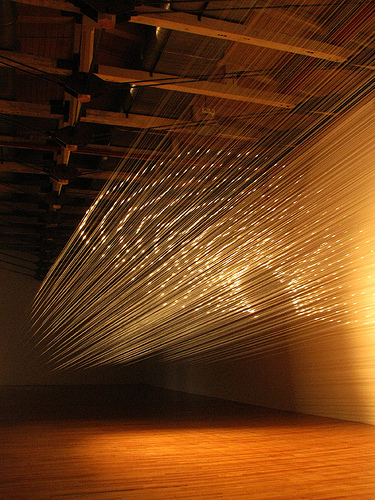
Frederick Kiesler
Kiesler’s longest-running project was Endless House, a single-family dwelling whose biomorphic form and lack of corners strongly contrasted with the hard geometric edges that defined most modern architecture of the time. He sought to design a structure responsive to the occupants’ functional and spiritual requirements. He developed his ideas for the house over several decades, creating numerous sketches and models. Although plans were made to build a to-scale model in MoMA’s Sculpture Garden in 1958, they did not materialize, and the project remains unrealized. Nonetheless, Kiesler’s Endless House concept was highly influential and stands as a strong expression of his bold statement: “Form does not follow function. Function follows vision. Vision follows reality.”
